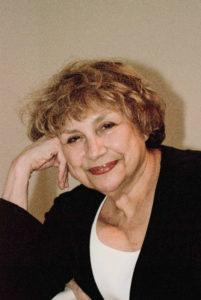Doctor Curmudgeon® 109 years later: The Good & the Not Good
[AdSense-A]
 By Diane Batshaw Eisman, M.D. FAAFP
By Diane Batshaw Eisman, M.D. FAAFP
“My, my,” thought Doctor Curmudgeon® “Goodness gracious! Indeed! Upon my stars!”
Why, 1910 seems just like yesterday.
It is necessary to remember that Doctor Curmudgeon, although quite youthful is old, old, older than the hills.
And so, 1910 is but a mere puff in times of yore for her.
For some bizarre and unknown (even to the good doctor) reason, the Flexner Report popped its head into her mental horizon.
In the years before the Flexner Report, medical schools were money making ventures. If you could pay the fee and write your name…you were in (but if you were black and/or female…it was a totally different ballgame).
Abraham Flexner was an educator and the brother of a physician.
To give some idea of the situation of medical education in the early and mid-nineteenth century, Doctor Curmudgeon® will now quote from a favorite radio program of hers. This is Robert Siegel of All Things Considered from a broadcast in 2010 (the centennial of the Flexner Report) in which he interviewed Professor Paul Starr of Princeton University.
“Prof. STARR: Well, during the 19th century, Americans were distrustful of expertise. There were, through the mid 19th century, no effective medical licensing laws, no regulation of medical practice or medical education. And so the whole field was thrown open to all kinds of practitioners of various medical sects and various kinds of entrepreneurs, who set up schools as money-making ventures, just as Flexner said in the passage you quoted.
SIEGEL: There were some medical schools affiliated with universities, but then there were these proprietary schools all over the country.
Prof. STARR: Yes. Medical schools at universities had themselves gone through a major transformation in the late 19th century with the introduction of laboratory sciences and other more advanced fields, but many other schools had not undergone that transformation. They were still back in the old-fashioned mode.
SIEGEL: I was looking at Flexner’s autobiography, which he published in 1940, and he was recalling some of the incidents of his study trip. And one of them, he says, I recall that when in Salem, Washington, I asked the dean of the medical school whether the school possessed a physiological laboratory. He replied, surely, I have it upstairs, I’ll bring it you. And he went up and brought down a small sphygmograph, an instrument designed to register the movement of the pulse, he said, or to test blood pressure, I guess. That was passing for medical school early in the last century.”
Even before the Flexner report, medical education had been changing.
After the Civil War, thoughts about medical education were beginning to focus on the role of a physician as someone who could solve problems and be a critical thinker, rather than an individual who just memorized stuff. So, laboratories and actual clinical experience were looked upon as what was called, “progressive education.”
Flexner’s report was another step on the way to medical education.
One of the recommendations in the report was to close many of the medical schools which did not adhere to the standards in this study. Well and good; because there were schools that devoted themselves purely to degrees in the study of naturopathy, homeopathy or other oddities.
The Flexner report is over 300 pages long and so Doctor Curmudgeon® takes her leave of any attempts at summarizing.
its major impact was on refocusing the medical school as an institution that was based at a university, was research oriented and the physician was viewed as more of a humanist who practiced preventive medicine.
However, there were terrible consequences such as the closing of schools that were devoted to the training of women and black students.
Before the Flexner reforms, there had been seven schools for black students and only two now remained. And there were seven medical women’s colleges, but after Flexner, only one remained: the Women’s Medical College of Pennsylvania .
To quote from Wikipedia:
“Flexner advocated closing all but two of the historically black medical schools. His opinions were followed and only Howard and Meharry were left open, while five other schools were closed. His perspective was that black doctors should only treat black patients and should serve roles subservient to white physicians. The closure of these schools and the fact that black students were not admitted to many medical schools in the US for 50 years after Flexner has contributed to the low numbers of American born physicians of color and the ramifications are still felt more than a century later.”
And for those who have the stamina to read the full report, it is probably available on the web or good old Amazon.com
Doctor Curmudgeon® is Diane Batshaw Eisman, M.D., a physician-satirist. This column originally appeared on SERMO, the leading global social network for doctors.
SERMO www.sermo.com “talk real world medicine”
[si-contact-form form=’2′]


